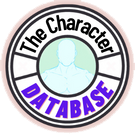Multiple Selves
Multiple Selves is the ability to have several different entities existing within one being. These entities can be minds, souls, living organisms, or combinations of these types. This ability has both advantages and shortcomings.
Types:
Type 1 (Multiple Minds): Describes individuals with one or more personas or personalities co-inhabiting their mind. Characters with this type have alternative identities that grant exceptional or supernatural powers, abilities, and/or resistances, sometimes even affecting their body's structure. Note that simple dissociative identity disorder cases do not qualify unless the alternate identities are extremely relevant and influential.
Examples: Kenshin Himura (Rurouni Kenshin), Alien X (Ben 10), Moon Knight (Marvel Comics)
Type 2 (Multiple Souls): Describes individuals with one or more spirits or souls co-inhabiting their body. This includes those possessed by one or multiple spiritual beings. To qualify as "selves," the spiritual beings should be sentient, whether autonomous, dormant, or forcibly controlled.
Examples: Yugi Muto (Yu-Gi-Oh!), Dani Phantom (Danny Phantom), Diavolo (JoJo's Bizarre Adventure), Kiryu (Godzilla)
Type 3 (Multiple Organisms): Describes individuals with one or more organisms co-inhabiting their body, including parasites, symbiotes, multiple heads, and similar entities.
Examples: Venom (Edward Brock) (Marvel Comics), Shinichi Izumi (Parasyte), Zygarde (Pokémon), Ryūko Matoi (Kill la Kill), Ettin (Dungeons and Dragons)
Possible Uses:
- Division of Roles: Each self can specialize in different skills or functions, activating only when their specific abilities are needed.
- Collective Intelligence: Multiple consciousnesses working together can handle intellectual tasks more quickly and efficiently than a single mind.
- Change in Body: Switching between selves can alter the body, providing different skills and abilities.
- Mental Resistance: A multitude of consciousnesses can enhance resistance to mental influences, as other personalities can counteract control if one succumbs.
Limitations:
- Disorganization/Chaos/Power Struggle: Different personalities might compete for control of the body, causing instability.
- Increased Complexity of Control: If one self is dominant, it may need to constantly manage the others, which can be challenging and limit other abilities.
- Problems with Memory: Autonomous selves may not share memories, leading to gaps or inconsistencies when switching between them.
